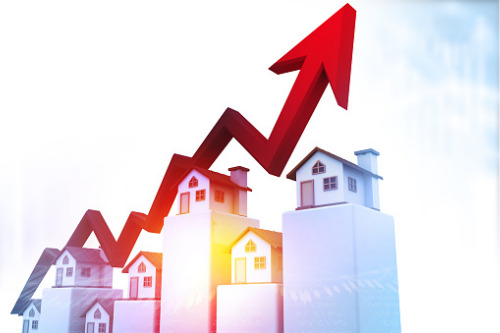Report identifies regions that reached new highs

House prices in New Zealand continue to soar despite the government’s effort to make the housing market more sustainable and support first-home buyers (FHBs) into homeownership, according to the Real Estate Institute of New Zealand’s (REINZ) May 2021 data.
The data revealed that median prices across New Zealand jumped by 32.3% from $620,000 in May 2020 to $820,000 in May. While the latest figure was not a new record, it was the highest annual percentage increase in house prices since REINZ began its records – with five of 16 regions and 18 districts reaching record median prices.
Meanwhile, the median house price across New Zealand, excluding Auckland, increased by 28% from $530,000 in May 2020 to $678,500 in May 2021.
Auckland’s median house price increased by 26.9% from $905,000 in May 2020 to $1,148,000 last month – a new record. Papakura District and Waitakere City also reached new record median prices of $900,000 and $1,050,000, respectively.
Aside from Auckland, Papakura District, and Waitakere City, three other regions reached record median prices, and one equalled its record:
- Taranaki: a 29.1% increase from $426,000 in May 2020 to $550,000 in May 2021. South Taranaki District also saw a new record median of $405,000.
- Tasman: a 21.2% increase from $701,500 in May 2020 to $850,000 in May 2021.
- Canterbury: a 26.5% increase from $460,000 in May 2020 to $582,000 in May 2021. Mackenzie District ($705,000), Selwyn District ($677,500), and Waimate District ($385,000) also saw record median highs.
- Waikato: a 21.7% increase from $600,000 in May 2020 to a record equalling $730,000 in May 2021. Otorohanga District ($535,000), Taupo District ($710,000), Waikato District ($726,000), and Waitomo District ($360,000) also reached record median highs.
REINZ acting chief executive Wendy Alexander claimed that New Zealand’s residential property market has remained solid.
“Median prices haven’t significantly eased yet as many had hoped would be the case, and things are certainly not getting any more affordable for first-time buyers,” Alexander added.
“This is underpinned by some very strong results in the REINZ House Price Index (HPI), which reached a new high and represented the highest annual percentage increase in the New Zealand HPI that we’ve seen since records began.”
REINZ’s HPI, which measures the changing value of property in the New Zealand market, increased by 29.8% year-on-year to 3,812 – a new high on the index, the highest annual percentage increase in the HPI that the organisation has seen since records began, and the 12th consecutive month that the organisation has seen a new high.
Excluding Auckland, house price values increased by 32.7% from May 2020 to 3,857 in May 2021 – a new high on the index, and the highest percentage increase since records began.
Auckland’s house price values increased by 26.3% year-on-year to 3,754 – a new record high, and the highest annual percentage increase in 68 months (September 2015). Meanwhile, all regions bar Gisborne/Hawke’s Bay, Otago, and Southland reached new highs on the index.
Last month, Manawatu/Wanganui had the highest annual growth rate in house price values, with a 52.1% increase to a new record index level of 4,993 – the largest annual percentage increase in house values for the Manawatu/Wanganui region since records began, and the highest annual percentage increase any region has seen since the REINZ HPI was created.
Wellington took second place with a 41.8% increase, followed by Gisborne/Hawke’s Bay with a 35.6% annual increase in house price values. Wellington’s increase was the largest increase in annual house price values for the region since records began.
Overall, REINZ said the lack of housing supply continues to push up house prices – with the industry seeing fewer than 15,000 properties available for sale in May, the second-lowest level of total inventory that REINZ has seen since it began collecting records.
“While some of the regions are starting to show signs of prices easing, which will be welcome news for locals who are looking to buy, it’s hard to know whether this is a direct result of the March 23 announcements or just the usual winter slow down. This is particularly true given that the Auckland market is still forging ahead, with another record median price seen in May,” Alexander said.



